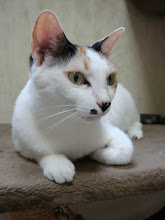December 2, 2009 at 10:05 AM by Esme Vos
I am attending the Supernova Conference in San Francisco where the theme is “Change Networks” or how pervasive connectivity has changed how we relate to one another. We usually think of pervasive connectivity in the online context, but how does pervasive connectivity alter physical space, in particular, cities and the human experience the city? That was the subject of an intriguing talk entitled “Public Objects — Connected Things and Civic Responsibilities in the Networked City” by Adam Greenfield (Nokia).
Greenfield began his talk by pointing out that by the end of 2012, 20 percent of non-video Internet traffic will come from networked sensors, generating many of us call machine-to-machine communications, although these communications can also occur between buildings, bus shelters and other objects we do not usually refer to as machines.
Greenfield’s thesis is that networked objects – be they machines, buildings or other urban structures – are changing the way humans experience the urban space and act against the way cities have evolved. The move towards object-to-object communications seems inevitable given that IPv6 provides a seemingly infinite number of IP addresses so that urban space will soon be “addressable, queryable and scriptable.”
One example cited by Greenfield is London Tower Bridge which has its own Twitter account and tweets its status: if the bridge is open, closed, etc. Soon, every object will be alerting us, addressing us, and perhaps monitoring us as well. But where does this lead? Is this what are cities for?
Cities have traditionally been havens of refuge for people escaping the cloying intimacy of small towns and villages. They have always been places where people took on another identity to build a new life and create better opportunities for themselves. They have also been sanctuaries by people called “revolutionaries” and hunted down by those wielding power. In cities it has been easy for these people to blend in and “disappear”. What happens when there’s no place to hide?
But plausible deniability and anonymity are becoming more difficult, says Greenfield, and this is not what cities are for. Greenfield refers to Jane Jacobs’ “eyes on the street” philosophy of urban planning where people are around watching out for their neighborhood, but not delving too much into the lives of their neighbors. He cites a small building in New York where residents knew one another via informal greetings in hallways and elevators. They lived together quite peacefully in that fashion until someone in the building decided to set up a forum/social network for the residents. Suddenly, the neighbors began finding out more intimate details about their neighbors and within six months, many of the residents moved out. The turnover of residents in this building rose dramatically. The key to living together in close quarters with so many people lies in not knowing too much about them.
Greenfield moved on to a more disturbing image of a city where the absence of anonymity infringes upon people’s rights to privacy and their ability to dissent from those who wield political and economic power. In a society where photos are indexable, taggable and uploaded to the Internet, your face can always be found and detected not just by humans, but by facial recognition software. This software is already being used in many cities’ wireless video surveillance projects. Greenfield argues that imposing the logic of networked sociality (e.g. of the Facebook and MySpace variety) onto a city destroys the urban experience.
A question we must ask is this: Who benefits from all this data gathering? Greenfield says that it is those who wield political and economic power who gain from the data that we generate through our movements, our photographic imprints, our own activity on networks, both social and physical. He urges that this data not be monopolized by a few companies, but that they be available for all to use via open source/creative commons licenses. Data should inspire local grassroots control, not control of people by a few who benefit disproportionately at the expense of the public.

0 comments:
Post a Comment